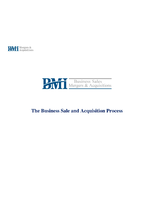EPA and Freddie Mac aim to cut multifamily building pollution.
Share:
Press Release Summary:
Agreement signed between EPA's Energy Star® program and Freddie Mac will help cut carbon pollution while increasing affordability of multifamily housing properties. Memorandum of understanding outlines key strategies to make multifamily housing more affordable by encouraging building owners and tenants to benchmark their energy and water performance as well as take steps to improve efficiency.
Original Press Release:
EPA and Freddie Mac to Cut Carbon Pollution and Increase Affordability of Multifamily Buildings
WASHINGTON – The U.S. Environmental Protection Agency (EPA)’s Energy Star program and Freddie Mac have signed an agreement that will help to cut carbon pollution while increasing the affordability of multifamily housing properties. The agreement outlines strategies to save water, energy and money for multifamily property owners and residents.
“Boosting energy and water efficiency not only saves money and makes these properties a better investment for owners and more affordable for families who live there -- it is also an important step in the President’s commitment to fighting climate change by cutting energy waste in our nation’s buildings,” said Janet McCabe, acting assistant administrator for EPA’s Office of Air and Radiation. “By making it easier to secure financing for energy efficiency investments and providing data about energy use and efficiency opportunities, these strategies will create lasting environmental and public health benefits while making multifamily buildings more efficient and valuable.”
"Freddie Mac is proud to partner with the EPA in this effort,” said Mitchell Resnick, Freddie Mac Multifamily vice president of loan pricing and securitization. “As one of the largest Commercial Mortgage-Backed Securities (CMBS) issuers in the country, we are looking to guide the industry and the CMBS market towards a greater sensitivity to environmentally responsible lending and investing. This partnership is the first of what we hope are many steps in that direction. We are looking at how energy efficiency improves the financial viability of the apartments we finance, and most importantly its impact on the affordability of rental housing."
Roughly one-third of Americans live in apartments within multifamily buildings, spending approximately $22 billion on energy every year. Rising energy costs are contributing to the decline in affordability for many of these Americans. Housing industry studies have projected that multifamily properties can become 30 percent more efficient by 2020, unlocking $9 billion in energy savings and preventing more than 35 million metric tons of greenhouse gas emissions per year.
In support of the President’s Climate Action Plan, this memorandum of understanding outlines key strategies to make multifamily housing more affordable by encouraging building owners and tenants to benchmark their energy and water performance and take steps to improve efficiency. Among those strategies:
- Freddie Mac will explore the collection of energy and water performance data from property owners during the loan underwriting and asset management processes.
- By demonstrating the financial value of energy and water efficiency to lenders and borrowers, Freddie Mac hopes to be able to influence lending practices in ways that encourage investments in energy efficiency and make multifamily housing units more affordable.
- EPA will assist Freddie Mac with these, and other, goals, by providing technical and educational support in the use of the Energy Star Portfolio Manager® energy management and tracking tool as well as other Energy Star resources.
The President’s Climate Action Plan calls for helping multifamily buildings cut waste and becoming at least 20 percent more energy efficient by 2020. While EPA has already been working with Fannie Mae and the U.S. Department of Housing and Urban Development, this latest agreement with Freddie Mac is another critical step forward in meeting the President’s goal. Together, these three organizations influence the largest sources of residential and multifamily lending in the country.
Products, homes and buildings that earn the ENERGY STAR label prevent greenhouse gas emissions by meeting strict energy efficiency requirements set by the U.S. EPA. In 2012 alone, Americans, with the help of ENERGY STAR, saved $26 billion on their utility bills and prevented greenhouse gas emissions equal to the annual electricity use from 35 million homes. From the first ENERGY STAR qualified computer in 1992, the ENERGY STAR label can now be found on products in more than 70 different categories, with more than 4.5 billion sold over the past 20 years. Over 1.4 million new homes and 20,000 office buildings, schools and hospitals have earned the ENERGY STAR label.
More information on EPA’s ENERGY STAR buildings program: www.energystar.gov/buildings
More Information on Freddie Mac: www.FreddieMac.com




